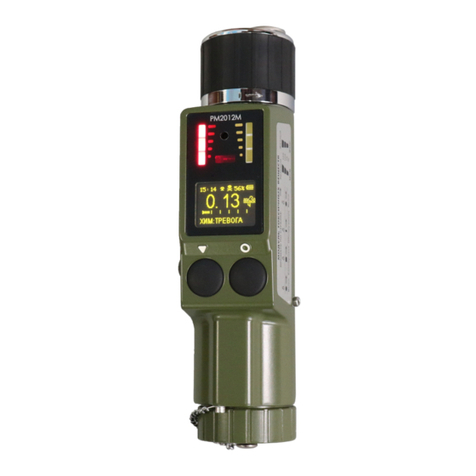
CONTENTS
1 GENERAL INFORMATION ........................................................................................................ 4
2 INSTRUMENT DELIVERY SET ................................................................................................. 5
3 TECHNICAL SPECIFICATIONS ................................................................................................ 6
4 EXTERNAL INSTRUMENT VIEW. CONTROL KEYS .......................................................... 12
5 LCD INFORMATION ................................................................................................................. 14
6 INSTRUMENT DESIGN AND OPERATIONAL PRINCIPLE ................................................ 15
7 SAFETY MEASURES ................................................................................................................. 17
8 CLIP MOUNTING AND DEMOUNTING ................................................................................. 17
9 INSTRUMENT POWER ............................................................................................................. 18
9.1 Place/Replace Battery and Rechargeable battery ................................................................ 18
9.2 Select battery type ................................................................................................................. 19
9.3 Rechargeable battery charging ............................................................................................ 20
10 GET THE INSTRUMENT READY FOR OPERATION ......................................................... 22
11 INSTRUMENT OPERATION .................................................................................................... 23
11.1 Instrument Operation Modes ............................................................................................. 23
11.1.1 Test Mode..................................................................................................................... 23
11.1.2 Calibration Mode ......................................................................................................... 23
11.1.3 Gamma Radiation DER Measurement Mode ............................................................ 25
11.1.4 Search Mode ................................................................................................................ 27
11.1.4.1 Detect Gamma and Neutron Radiation Sources ................................................. 28
11.1.4.2 Localization of Gamma Radiation Sources ......................................................... 30
11.1.5 Menu Indication Mode ................................................................................................ 31
11.1.6 Settings Mode............................................................................................................... 32
11.1.6.1 Instrument Information ....................................................................................... 32
11.1.6.2 History Setting Mode ........................................................................................... 33
11.1.6.3 Alarms On/Off ...................................................................................................... 33
11.1.6.4 Display Settings Configuration ............................................................................ 34
11.1.6.5 Select Battery Type .............................................................................................. 34
11.1.6.6 Set Instrument Date and Time............................................................................. 35
11.1.6.7 Set Volume of Sound Alarm ................................................................................ 35
11.1.6.8 Search Function On/Off in Measurement Mode. Select measurement units ..... 36
11.1.6.9 Set Identification Parameters .............................................................................. 36
11.1.7 Threshold Setting Mode ............................................................................................... 37
11.1.8 Scintillation Spectra Registration Mode ..................................................................... 39
11.1.8.1 Scintillation Spectra Accumulation ..................................................................... 40
11.1.8.2 View Mode of Saved Scintillation Spectra........................................................... 44
11.1.8.3 Select of reference source for autocailbration ..................................................... 45
11.1.8.4 Autocalibration .................................................................................................... 45
11.1.9 Reset of statistics .......................................................................................................... 46
11.1.10 Mode of Quick Identification of Radionuclide isotope composition ........................ 46
11.1.10.1 Manual Start of Quick Identification of Radionuclide isotope composition
Mode ................................................................................................................................... 47
11.1.10.2 Automatic Start of Mode of Radionuclide isotope composition Identification 48
11.1.11 PC Communication Mode ......................................................................................... 48
12 TECHNICAL MAINTENANCE ............................................................................................... 50
13 POSSIBLE FAULTS .................................................................................................................. 50
14 VERIFICATION METHOD ..................................................................................................... 51
15 STORAGE AND TRANSPORTATION ................................................................................... 55
16 DISPOSAL.................................................................................................................................. 55




























